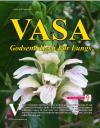 A frozen shoulder also known by doctors as adhesive capsulitis is one that develops so much pain and stiffness in the shoulder joint that the affected person finds it difficult to move the shoulder freely. In some cases it is so severe that the shoulder cannot be moved at all, hence the term “frozen” given. It has nothing to do with temperature.
The real cause is not known. What we do know is that inflammation develops within the shoulder joint and adhesions form. Adhesions, which are fibrous bands of tissue that look like cobwebs, develop within 10 days or so and occupy the joint space. The disorder can develop “out of the blue”, without a history of injury or overuse. But sometimes an injury such as a fall on to the shoulder may precede a frozen shoulder. It may follow a period of forced disuse, such as after a stroke.
It can affect any person of any age but seems to be more common among middle-aged women and young athletes. It is commonly encountered in people with diabetes.
The main symptom is pain and stiffness in the shoulder, which is slight at first and then gets progressively worse.
A frozen shoulder also known by doctors as adhesive capsulitis is one that develops so much pain and stiffness in the shoulder joint that the affected person finds it difficult to move the shoulder freely. In some cases it is so severe that the shoulder cannot be moved at all, hence the term “frozen” given. It has nothing to do with temperature.
The real cause is not known. What we do know is that inflammation develops within the shoulder joint and adhesions form. Adhesions, which are fibrous bands of tissue that look like cobwebs, develop within 10 days or so and occupy the joint space. The disorder can develop “out of the blue”, without a history of injury or overuse. But sometimes an injury such as a fall on to the shoulder may precede a frozen shoulder. It may follow a period of forced disuse, such as after a stroke.
It can affect any person of any age but seems to be more common among middle-aged women and young athletes. It is commonly encountered in people with diabetes.
The main symptom is pain and stiffness in the shoulder, which is slight at first and then gets progressively worse.
 The pain is a deep, sickly, throbbing ache in the shoulder, with radiation down the arms and possibly into the neck. It is aggravated by certain everyday movements such as dressing and undressing, as well as combing the hair. The diagnosis is usually confirmed by ultrasound examination.
Unfortunately, healing is very slow but a complete recovery can be expected even without treatment. This may take two years or longer but on average takes about 18 months. About one-third of people have some restriction of movement after three years, but it does not affect their daily activity.
The pain is a deep, sickly, throbbing ache in the shoulder, with radiation down the arms and possibly into the neck. It is aggravated by certain everyday movements such as dressing and undressing, as well as combing the hair. The diagnosis is usually confirmed by ultrasound examination.
Unfortunately, healing is very slow but a complete recovery can be expected even without treatment. This may take two years or longer but on average takes about 18 months. About one-third of people have some restriction of movement after three years, but it does not affect their daily activity.
 Ayurvedic Management
Ayurvedic Management
Oraly:
1. Guggulu & shallaki preprations are very effectives.
2. In decoctions – dashmoola kwath, rasanadi kwath & erandmooladi kwath are very effective.
Panchkarma Therapies
Abhyanga: Abhyanga is a procedure of choice for frozen shoulder it is defined as an ayurvedic procedure of application of sneha herbs medicine over body with certain amount of (very mild) pressure in specific directions . It can be applied to the whole body or locally. Many of the prevalent modern massage techniques are the modified forms of abhyanga.
Patrapinda swedana: Patra pottali sweda refers to the sudation performed by specially prepared bundle of medicinal leaves & medicated oils
Shasti, Shali, Pinda: The word 'PINDA' means bolus. Pinda sweda refers to the sudation performed by bolus of drugs. Shashtika pinda sweda is performed in ekanga or sarvanga with the bolus of boiled Shashtika shali with Balamoola kwatha and ksheera.
Kalka bandhana or upanaha bandhana: 
Upanaha is a type of ekanga sweda. The word upanaha means to tie (bandaging of paste prepared from certain herbal medicine) It can be done with or without heating the medicine. If upanaha is done during day, it is removed at night and if done during night, it is removed in the morning.
1. MD Scholar
(P.G Dept . of Panchkarma NIA , Jaipur )
2 & 3. Associate Professor & Head
(P.G Dept . of Panchkarma NIA , Jaipur )






 October 2020
October 2020
 Jan 2020
Jan 2020
 June 2019
June 2019
 January-February 2019
January-February 2019
 Augest-September
Augest-September
 April 2018
April 2018
 November 2017
November 2017
 June 2017
June 2017
 November 2016
November 2016
 September 2015
September 2015
 March 2015
March 2015
 July 2014
July 2014
 January 2014
January 2014
 July2013
July2013
 March 2013
March 2013
 May 2012
May 2012
 May 2011
May 2011
 Sep 2010
Sep 2010
 Jun 2010
Jun 2010
 Feb 2010
Feb 2010
 December 2009
December 2009
 August 2009
August 2009
 June 2009
June 2009
 Feb 2009
Feb 2009
 December 2008
December 2008
 October 2008
October 2008
 March 2008
March 2008
 July 2008
July 2008
 May 2008
May 2008